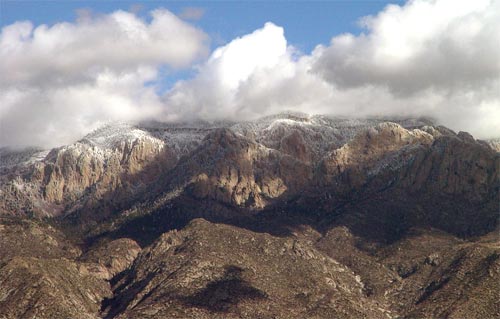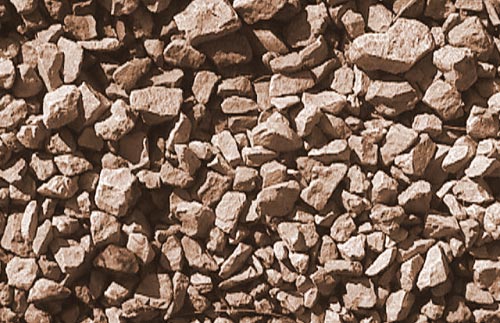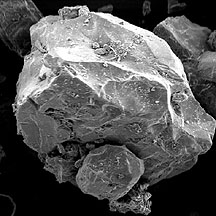Fractal Geography
Fractal RocksThe Earth is full of fractals. Many of the patterns in the landscape show self-similar structure, and many of these features have been formed by the repetition of simple processes over thousands, millions, or even billions of years. In this chapter, we'll explore some of the fractal patterns in rocks, in rivers and watersheds, in mountains, islands and coastlines.  Sandia Mountains, outside Albuquerque, NM. Photo courtesy of Jeddah Carrell.
Consider a mountain, like the Sandias above. At a simple level, they are very, very large rocks. Over very long periods of time, large boulders break off from the top and tumble to
the bottom. As a boulder falls, it may shatter into smaller rocks. These rocks will then break further, into smaller pieces. The smaller rocks break down into pebbles. Eventually the
pebbles turn into grains of sand.
If you don't know the scale, the rocks above could be boulders, pebbles, or grains of sand, as these are all fractal copies of each other. That is, they have the same shape at different sizes. Remember that a fractal is a self-similar pattern that is caused by repeating a simple process over and over again. Well what are the repetitive processes that cause mountains to crumble into sand? There are several. At the slowest timescale, there are seismic rumblings - earthquakes - that may shake the mountain, dislodging rocks. A much more regular effect comes from the seasonal weather changes. The annual cycle of summer and winter brings snowfall that melts and provides runoff water, which produces erosion. On a daily cycle, water may freeze and melt repeatedly. The liquid water finds its way into cracks in the rocks, and then as it freezes it expands, breaking open the rocks. These process repeat countless times and result in the breakdown of mountains into boulders, rocks, pebbles and sand grains, all of which share a common fractal structure. Standing at the base of a mountain surrounded by all these rocks of different scales, you can imagine all the rocks, pebbles and boulders as being pieces of an impossibly difficult, gigantic 3D puzzle! |
||
|
<- PREVIOUS NEXT -> © Fractal Foundation. |

